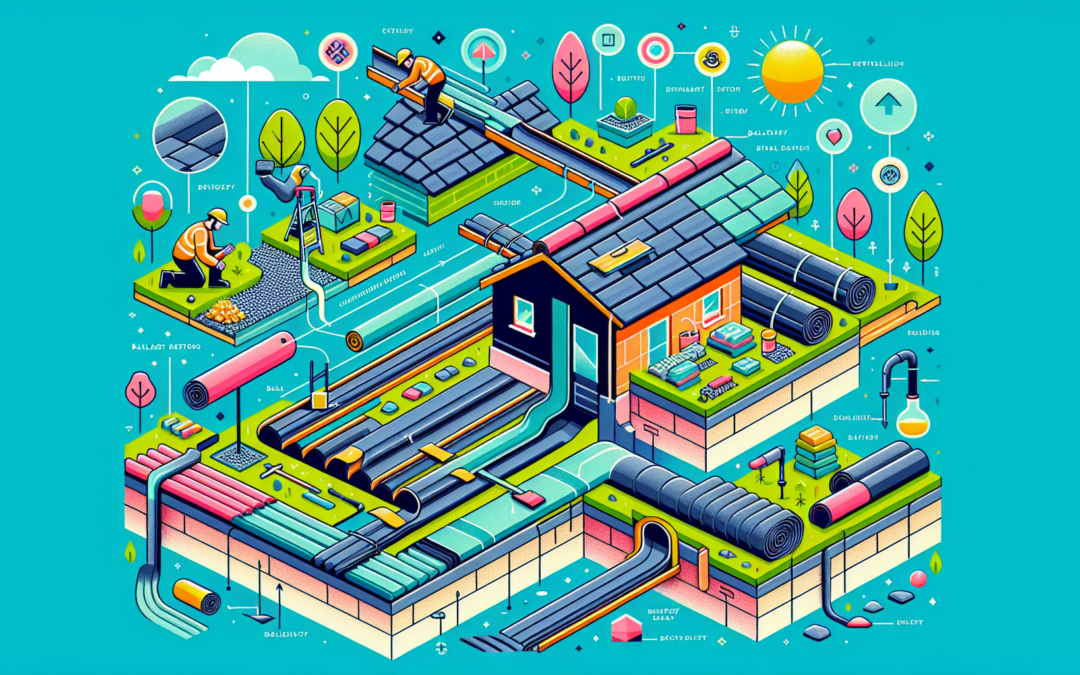What is a Ballasted Rubber Roof?
A ballasted rubber roof involves laying down large rubber sheets on top of a roof. These sheets are not glued or nailed down. Instead, they are held in place by heavy materials like stones or pavers. This is what ballasted means – using weight to keep things in place. These rubber sheets are great at keeping water out and can be fitted to lots of different roof shapes and sizes.
Benefits of Ballasted Rubber Roofs
Why choose a ballasted rubber roof? There are several cool benefits:
- Easy to Install: Since the rubber sheets are not attached with nails or glue, they can be laid down more quickly than some other types of roofs. This can save time and money.
- Durable: The rubber material is tough and can handle all sorts of weather without breaking or getting damaged easily. It also lasts a long time, which means you won’t have to replace it as often.
- Eco-friendly: Some of the rubber used can be recycled, which is good for the planet. Plus, the stones or pavers that weigh down the sheets can sometimes be gathered from the local area, reducing the need for transporting materials from far away.
- Protects the Roof: Besides keeping water out, the weight on top can help protect the roof from being damaged by things like wind or walking on it.
How is a Ballasted Rubber Roof Installed?
Putting in a ballasted rubber roof is a unique process:
- Preparation: First, the roof surface is cleaned and checked for any damage. Any problems have to be fixed before the rubber goes down.
- Laying the Rubber Sheets: Next, big rubber sheets are rolled out over the roof. The edges of these sheets overlap a bit to make sure no water gets through.
- Adding the Ballast: Once the rubber is laid out, heavy materials like gravel, stones, or concrete pavers are spread over the top. These materials are what keep the rubber sheets in place.
This roof setup can be done relatively quickly, and it works well for flat or low-sloped roofs.
Conclusion
Ballasted rubber roofs are a smart choice for many buildings. They are quick to install, last a long time, are good for the environment, and help protect the building from weather damage. If you’re considering a new roof, this might be a great option to think about!

